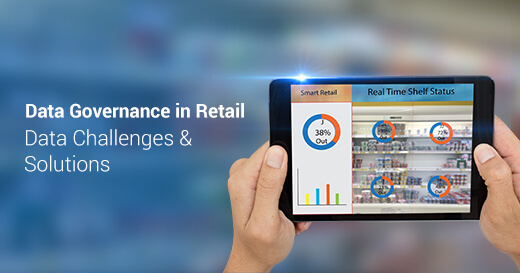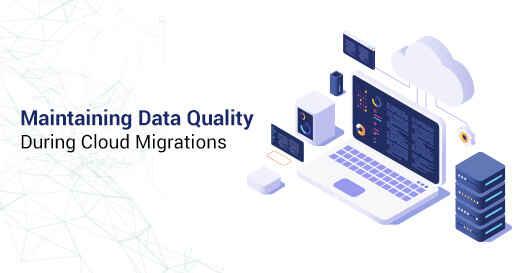Achieving Enterprise-Wide Data Reliability
Written by Imran Abdul Rauf
Technical Content WriterBusiness data drives automated workflows, provides customer service teams valuable insights before attending calls, and helps business owners with smart decision making. When enterprise-level data is secure and reliable, the business is on course with growth. However, at every point of data creation, processing, and usage, the quality is at risk.
According to Gartner, poor data quality incurs companies to lose an average of $12.9 million per year. Besides affecting the revenue streams, poorly managed data also makes the data ecosystems more complicated, resulting in equally bad decision making.
Why is Data Quality the Load-Bearing Structure of your Data Analytics Architecture?
Enterprise data quality essentially supports the elements to carry data analytics. And without top-quality data, analytics, forecasting, and reporting are all subjected to inaccuracies and inefficiencies. Organizations need a defined process that ensures the quality of data. However, before that, you need to understand the factors that result in quality data and comply with an approved data governance framework.
Enterprise Data Governance Framework
- Enterprises incorporating a workflow to administer data management activities provide an accountable network of committed, virtual resources to provide enterprise-level quality data.
- Technology backing mutual information, exchange solutions, workflows, and corporate governance.
- Data architecture employing enterprise data benchmarks, business information models, meta data dictionary, and security and privacy laws.
- Policies referring to manage data guidelines and regulations to enforce data standards and processes.
- Processes lay down structures defining how data governance processes, policies, and enterprise data quality are created and changed on a need basis.
- Compliance creates measurement KPIs to monitor data management performance and suggests improvements to refine master data continuously.
Understanding Predictive Data Quality
Even though there are plenty of data quality solutions and governance practices in store for businesses worldwide, the loss incurred every year isn’t going to lessen anytime soon. Data teams in organizations are often reduced to work with limited data coverage, siloed data quality view, and manual rule writing and handling. It becomes particularly prominent when data creators and consumers work in isolation and fail to recognize the opportunities to improve data from an organizational standpoint.
Consequently, companies will lack enterprise-level data quality base and won’t be able to respond to analytics, regulatory, and AI-based correspondences in a cost-effective, scalable fashion. Ensuring the data is of high quality involves more than plenty of rules. Fortunately, predictive data quality leverages the advancements in data science and machine learning to auto-generate SQL-based, non-proprietary, and flexible data quality rules that resolve many problems arising from data quality tasks.
A smart data quality system can evolve rules at the first call, is capable of adapting to the ever-changing data landscape, and inquires if the rules reflect the activities and occurrences with the data and the business.
According to Gartner, 60% of enterprises will use ML-backed technology for data quality improvement purposes by 2022. Leveraging ML and AI algorithms improve the predictive jobs of detecting quality problems, estimating their impact, and promptly prioritizing them.
How Predictive Data Quality Function?
Predictive data quality monitors streaming data in real-time and catches issues in an instant. It identifies duplicate data assets, missing records, inconsistent input, and other issues proactively. The purpose is to ensure only high-quality data drives through all the connected applications or provides trusted data for trusted similar insights.
It automates profiling datasets and enables alerts whenever any changes in data affect quality. DataOps or Data Stewards use impact scoring to quickly prioritize issues and provide complete data pipelines for high-quality results.
Companies need to focus on the following key drivers if they are to acquire enterprise-level data reliability.
- Using auto-discovery for data quality concerns without any manual rule writers and domain experts while automatically finding data drift, outliers, patterns, and schema modifications.
- Monitoring the movement of data and visibility into data issues to specify the root cause examinations.
- A robust prioritization mechanism emphasizing business-sensitive data with optimum results and starting remediation workflows through relevant data owners.
- Scalability execution throughout large, diverse databases, files, and streaming data.
Machine learning-driven predictive data quality automates the monitoring process without actually moving any data. Seemingly, one of the most significant benefits as teams can conveniently scale the data with business growth. It is essential for predictive data quality to consistently comply with privacy rules such as HIPPA, CCAR, GDPR, and CCPA in order to meet business goals and avoid incurring penalties.
ML-facilitated auto-discovery can locate critical information across the data servers to ensure privacy is assuredly met. Additionally, teams can speed up the compliance procedures for regulated sectors such as healthcare, finance, etc., by producing audit data and reports through self-service data quality.
Employing an Enterprise-Wide Approach for Data Quality and Observability
The dynamics of data and analytics in the corporate space constantly demand new ways of thinking and productive workarounds. Identifying the data creators and data consumers in the organization constitutes two main components, system and people. And both systems and people rely on reliable, compliant, and timely data. But how to unite everyone under trusted data and deliver enterprise-wide data reliability and unification?
Using different tools and technologies for data governance, data lineage, data quality, and data catalog in a collaborative manner can prove far more effective than individual practices. When data governance and analytics professionals synergize their technologies into a full-fledged system, these practices automate and centralize data quality workflows for self-service, continuous, and predictive data quality.
Data producers working in siloed environments can unite with data consumers to facilitate data quality improvement efforts.
Prioritize Data Issues with Lineage Visualization
Here must be numerous data-related issues your company is dealing with. If you have to choose two to three ones amongst the entire pool, how to decide which one to fix? This is where business impact ranking through graphical analysis helps! In order to deliver trusted data across the organization, first you need to acquire a thorough understanding of the data itself. Where does data originate from? What transition does it pass through its entire journey?
Data lineage can tell you that a particular dataset arrives from a particular source. The activity allows you to comprehend its level of quality and accuracy, which can be further mapped for quality improvement purposes.
Align with Data Governance Workflows
Chief data officers, or data owners at the strategic level prioritize developing a data-centric culture, data analytics strategy, and a data governance program. A sound data governance program complements large and versatile datasets and their value.
Data governance workflows simplify the data stewardship tasks to gain business agility. The reason why IT teams need to create strong data governance programs is to establish and encourage a mutual understanding of data.
Handpicked content: Top 4 Data Governance Practices You Need to Know for 2022
Working together with self-service, predictive data quality, the resulting environment is cooperative in nature which in turn builds an enterprise-scale contribution to quality. To empower the organization with a robust data ownership model, you need to recognize issues associated with predictive data quality and communicate quality concerns to data owners via automated workflows.
Self-service data quality helps enterprise users in acquiring trust in their data and making use of the following features:
Unified, convenient scoring system across all kinds of data storage
Interactive, customizable dashboards to gain prompt insights regarding data quality
Personalized alerts to identify and allocate data quality issues in a proactive fashion
Finding Context with Data Catalog
When it comes to data quality issues, it is often difficult to provide adequate context regarding how the issues relate with your business. But users can organize the data assets alongside data catalogs which helps authorized data stakeholders and consumers discover and learn about the complete context to produce meaningful business insights.
The following features are used to make the data catalog streamline context and governance with data access.
Automatic tagging and categorization for a better data shopping experience
ML-based discovery, curation, and profiling of data assets to obtain a holistic view
Ratings and reviews to incorporate quick insights into data quality
Further Tips
When data is unreliable, managers lose faith in them and resort back to their gut instinct to make decisions and create and implement strategies at all levels. For example, they become more suitable to reject vital, counterintuitive implications that protrude from big data analyses and data warehousing solutions.
Teams can start by fixing their organization’s data foundations by ensuring they have a powerful CRM to centralize all contact data, processes to organize and segment data, educational data literacy programs, and a clear strategy on how you’ll use and maintain the gathered data.
Thoughts
A top-performing marketing campaign is all about leveraging the individual qualities of each team member and creating and implementing an integrated effort to deliver a winning, ROI-driven performance. Similarly, an organization or IT team unified under a mutual understanding of internal and external data creates an enterprise-wide approach through different practices, which commits a winning strategy.
Royal Cyber is a big data analytics firm providing robust data governance solutions for businesses and helping them acquire operational excellence through better-managed data. You can connect with us to get a free quote and learn how our data governance team helps you with your data-based problems.



